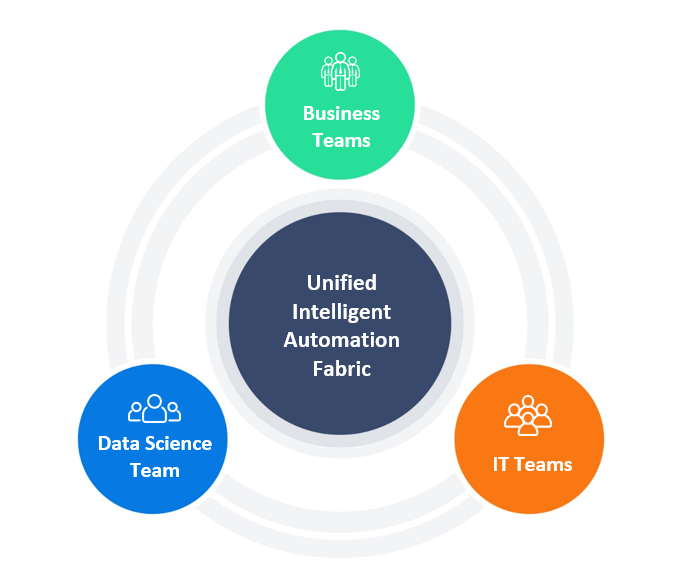
Listen to this blog
The wave of recent developments in artificial intelligence, machine learning, natural language processing and computer vision paired with ongoing advancements in cloud computing has created new opportunities for businesses to change the status quo. By leveraging such emerging technologies, business can tap in to a variety of new data sources to optimize the decision lifecycle to their competitive advantage.
However, there are formidable obstacles in scaling AI’s impact across the enterprise. In most instances, AI-related capabilities are being developed in a purpose-built fashion and deployed in silos with inadequate control and flexibility for end-users. The overall development cycle is long where IT and Data Science teams manage most aspects of the data ingestion, including processing and algorithm modelling for even minor variations of users’ requests. The resulting sprawl of purpose-built solutions lead to sustainability and cost challenges which impedes the progress and velocity in materializing the overall potential.
As a result, the prevailing adoption and evolution paradigm is inherently sluggish, costly, and difficult to scale across the enterprise for sustained evolution of Intelligent Automation capabilities.
Shifting the enterprise journey from ad-hoc evolution to centralized platform of intelligence
Bringing sustainability to AI adoption across the enterprise requires a strategic approach and consistency in how an organization approaches intelligent automation and data processing to leverage its full potential. Applying artificial intelligence and advanced analytics to business problems involves a different set of skills, talent, technology, and mindset.
Executives who truly believe in enabling and democratizing AI & Deep Learning platforms as a strategic asset across the enterprise need to consider making careful investments in the technology capabilities that can seamlessly scale and evolve. A few key strategic considerations for deploying the central enterprise platform of intelligence are as follows:
- Machine intelligence along with cognitive capabilities are infused in the decision workflows across the enterprise via use case specific apps, reporting systems, data extracts, or through A2A interoperability
- A singular, evolving enterprise intelligence fabric can be centrally managed and collaborated on, and that works across all types of internal, external, structured, and unstructured data sources through a wide variety of AI and data science capabilities
- Analyst or power users in business departments can rapidly respond to business needs by composing rich user experience-driven applications/workflows using existing discoverable assets like UI templates, models, signals, and filters into processing workflows
- Data science teams constantly add new capabilities and evolve existing ones with speed by leveraging curated, shared and managed assets like data sources, signals, and filters to gain the most efficiency
There is need to critically rethink the foundational enablers for scaling AI across the enterprise for sustainable value generation. In my experience, most companies who do not approach AI capability as a strategic asset and focus more on individual use cases on ad-hoc basis, run out of steam rather quickly. Whereas, the companies who have focused on a methodical approach, are already realizing tremendous business benefits and are on the path of continuous evolution and accelerating their competitive advantage.
Join us at the ISG Digital Business Summit 2020 where we will discuss the maneuvers needed to analyze and utilize your organization’s data to make informed decisions about processes, employees, and the path forward.





